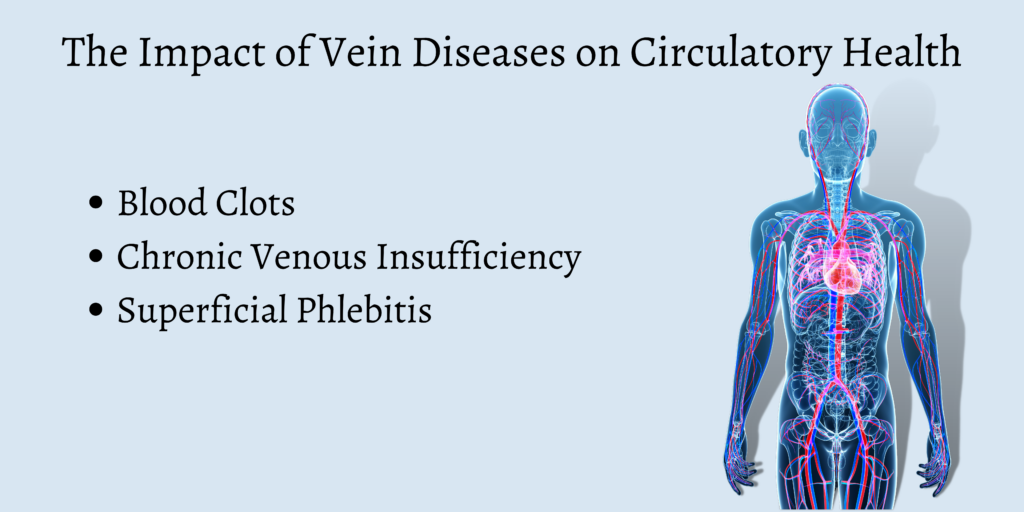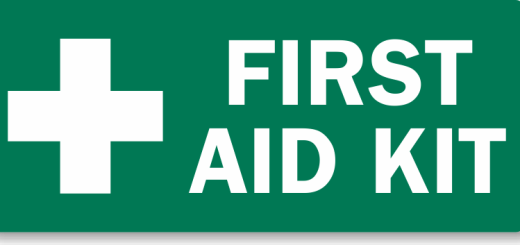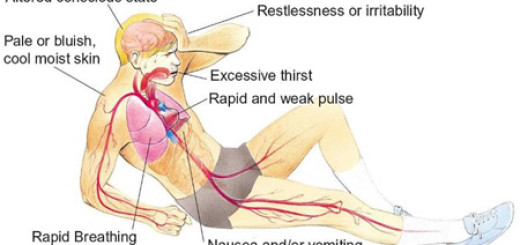What is the Function of Veins in the Circulatory System?
Veins are just one part of the larger circulatory system. The circulatory system comprises various components, including the heart, arteries, veins, and blood.
This system is vital because it works to carry essential elements like oxygen, hormones, and nutrients to cells. It also removes carbon dioxide by carrying it to the lungs for exhalation.
Veins are vascular vessels that carry blood to the heart. They arise or are formed from venules which are small vessels carrying deoxygenated blood from the capillaries in tissues.
The pressure through veins is much lower than that of arteries and as a result of this veins have valves within them to prevent backflow of blood that may arise as a result of gravity. Because of the low pressure, you are unable to feel a pulse through a vein.
Almost all veins carry deoxygenated blood. An important exception to this rule is the pulmonary vein which carries oxygenated blood from the lungs to the left side of the heart so it can be pumped around the body.
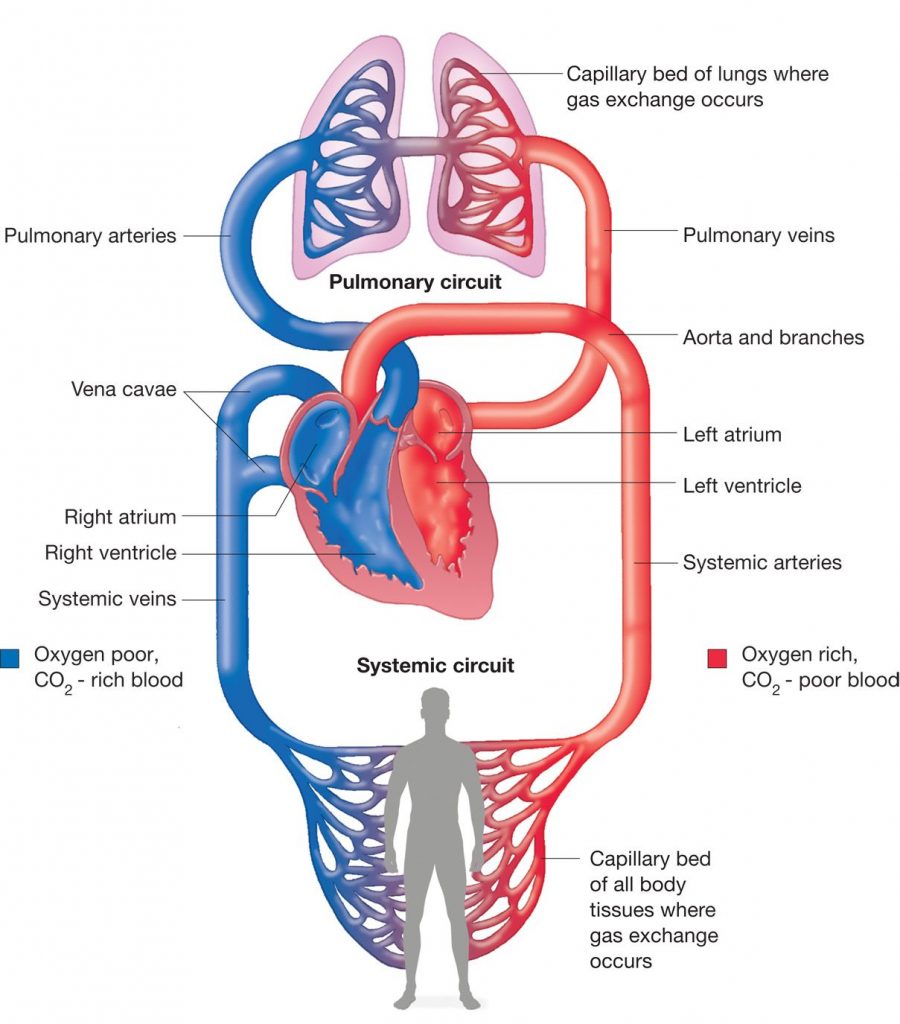
Important veins to be aware of are the jugular veins which drain deoxygenated blood from the brain and the superior and inferior vena cava, which drain into the right atrium from the merging of veins from the top and bottom half of the body respectively.
Diseases That Affect Veins
Deep Vein Thrombosis (DVT)
A Deep Vein Thrombosis (DVT) is a blood clot that has arisen in a deep vein, commonly but not exclusively, in the leg. It can be caused by long periods of immobility (long haul flight or being in a plaster cast) or having a predisposition to clotting abnormalities of the blood.
The clot causes a blockage in blood flow resulting in pain and swelling. If left untreated part of this blood clot could break off, potentially blocking small vessels in the lungs creating a pulmonary embolism (PE). Any patient with a suspected blood clot should be urgently referred to the emergency services. Treatment of DVTs is with blood thinners that work to help the body break down the clot and clear the blockage.
Varicose Veins
Over time superficial veins in the leg succumb to the constant gravitational force they have to work against. They become dilated and increased backflow of blood occurs. They become more noticeable, and a relatively small impact can cause a bleed. A varicose vein bleed should be treated like any other bleed. Pressure should be applied with a bandage and the limb raised to limit blood flow into the bleeding limb.
The Impact of Vein Diseases on Circulatory Health
Vein diseases (or venous diseases) can cause complications ranging from damage to the heart to the clotting of the veins and arteries.
It’s not a given that people with vein diseases will go on to have heart problems; however, some conditions can cause this, so it’s essential to be aware of the symptoms.
Blood Clots
Blood clotting is normal; it stops bleeding if you have a cut, for example. Your body produces thick clumps of blood to stop the bleeding. These are then naturally broken down and dissolved.
However, when the body forms too many clots or cannot break them down properly, this can cause a severe problem. Blood clots can block veins and may go on to become pulmonary embolisms (loose clots that travel through veins, blocking blood flow and causing organ damage).
These clots can cause damage to the heart and other organs, such as the brain. If a person experiences any of the following:
- Shortness of breath
- Pain in the chest left arm, shoulder, or jaw
- Sudden high blood pressure
- Leg pain, swelling, redness, or warmth
- Difficulty speaking
- Intense headaches
- Paralysis
- Dizziness
then it is important to call 911 immediately.
Chronic Venous Insufficiency
Chronic Venous Insufficiency impacts the veins. It can be linked to varicose veins. If veins in the legs can’t bring blood back to the heart efficiently, blood begins to pool in those veins, which can cause pain.
Symptoms include:
- Swelling
- Itchy/flaky skin
- Skin discoloration or a change in skin texture
- Tired, aching legs and feet
- Leg cramps and pain
- Ulcers or wounds
It’s essential to seek advice from a doctor if a person begins to suffer these symptoms.
Superficial Phlebitis
Phlebitis impacts the veins, causing a blood clot to form. One form of this is deep vein thrombosis. Superficial Phlebitis affects veins close to the skin and usually pops up if a person has had a trauma of some kind to a vein (like after an IV).
Luckily, these usually break down quickly in a natural healing process. However, symptoms to look out for include the following:
- Pain and swelling
- Red, itchy, warm skin
- Low-grade fever (when checked with a thermometer)
If a person has these symptoms, they should seek medical advice.
Vein Health: Tips For Maintaining a Healthy Circulatory System
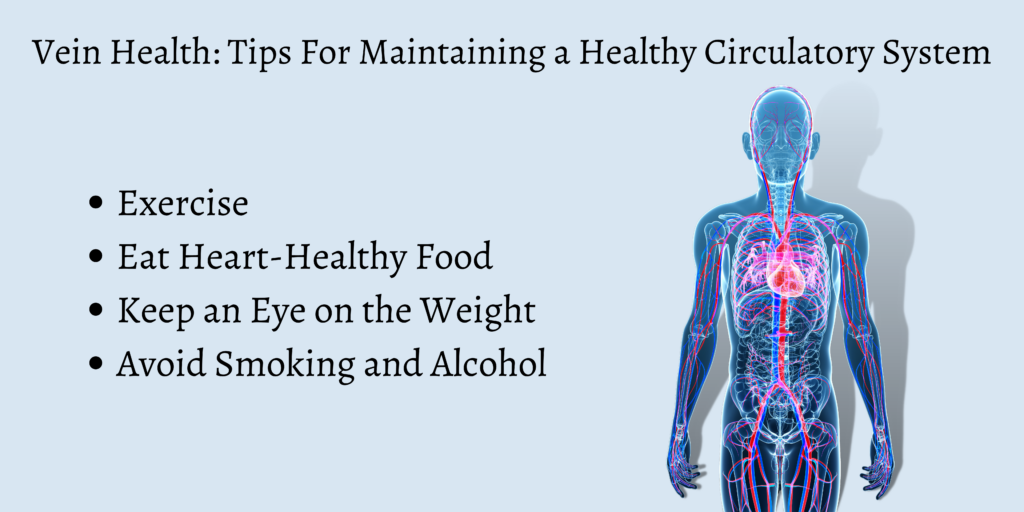
Looking after the circulatory system is essential. There are some simple ways that people can improve their vein and heart health.
Exercise
Get moving as much as possible to improve blood pressure and lower cholesterol. Any amount of exercise is better than no exercise, but ideally, aim for 150 minutes of moderate physical activity a week. If starting a new exercise program, it’s best to consult a doctor, especially if people have prior health conditions.
Eat Heart-Healthy Food
Some foods are better than others for heart and vein health. These include:
- Leafy green vegetables (packed with Vitamin K, which protects the arteries and encourages healthy blood clotting)
- Berries (strawberries, raspberries, blueberries, and blackberries are full of heart and vein-healthy antioxidants)
- Whole grains (like brown rice and quinoa, which can protect heart health)
- Fatty fish (or fish oil, like Omega-3 supplements. This can protect the heart from diseases)
- Avocados (these have good fats and are rich in potassium, which is suitable for heart health and decreasing blood pressure)
- Beans (these are linked to reduced blood pressure and inflammation)
- Walnuts (packed with magnesium and manganese, great for reducing cholesterol)
- Tomatoes (these may help lower the risk of a stroke or heart disease)
- Green tea (this can increase fat burning and reduce inflammation)
Keep an Eye on the Weight
Obesity is linked to heart disease. Dropping to a healthier weight helps to improve heart health and circulation. Even reducing calories may make a difference in the long term. It’s always best to check with a doctor before trying a calorie-restrictive diet.
Avoid Smoking and Alcohol
Alcohol can contribute to weight gain and increase the risk of heart disease. Try to keep drinking alcohol to a minimum to improve heart health.
Tobacco is incredibly harmful to health, including the heart. Quitting smoking can hugely improve heart health. After a year of no smoking, a person’s risk of heart disease will be cut in half.
Final Thoughts on Veins and Circulatory Health
Veins play a vital role in the circulatory system; it’s incredible to think about the sheer number of them in the body (it’s almost impossible to count them, as some veins are so small). Veins are essential for carrying blood to the heart.
As always, keeping veins (and the heart) as healthy as possible to work effectively in the body is crucial.

